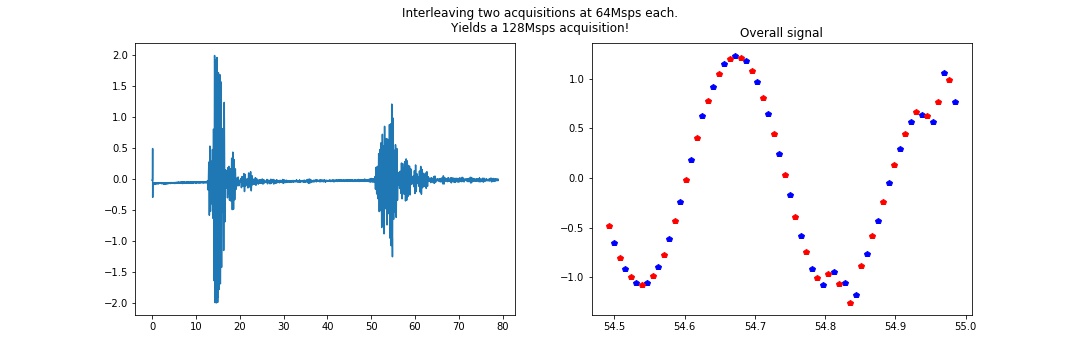- Tip: reaching 128msps
Playing with the trigger, it’s possible to interleave two signals and artificially double to acquisition speed, yielding clean images.
The version used for this is the GPIO firmware, but it is natively integrated in the usb version of the firmware.
Setup
The usual fixed target. But code has changed.
x.setNLines(1) # Setting the number of lines
x.setMultiLines(False) # Multi lines acquisition
x.setMsps(0) # Acquisition Freq
for k in range(10):
A = x.setTimings(200,100,2000,25000+5*k,105000) # Settings the series of pulses
#print A
# Do the acquisition
x.JSON["data"] = x.doAcquisition()
x.JSON["N"] = x.JSON["N"] + 1
Images
On the pictures below, we take two consecutive sampling. Blue dots then red dots.
We start with blue dots, and we take a point every 1/64us (sampling speed at 64Msps). Then we do a second acquisition, but we delay this second sampling start with 1/128us. We can do this because the thing we sample is the same between two acquisitions.
We then plot red and blue dots (interleaving). Because we have this 1/128us (half a period) shift, it is equivalent to an interleaving.
So the blue dots would be at time 0/64, 1/64, 2/64 (or 0/128, 2/128, 4/128) and the red dots would be at times (0/64+1/128, 1/128+1/64) that is equal to (1/128, 3/128, 5/128…). So if you join the two series you have 0, 1, 2, 3, 4 (/128) equivalent to a 128msps sampling
Overview

In detail
It seems that the different series interleave quite nicely, even in the detail.
